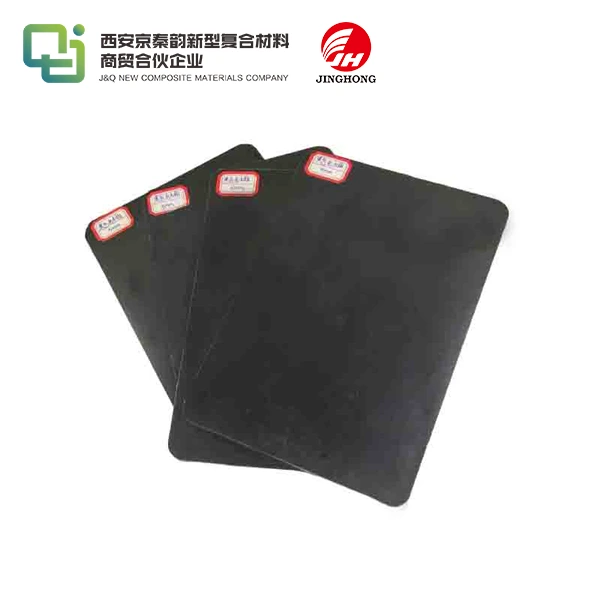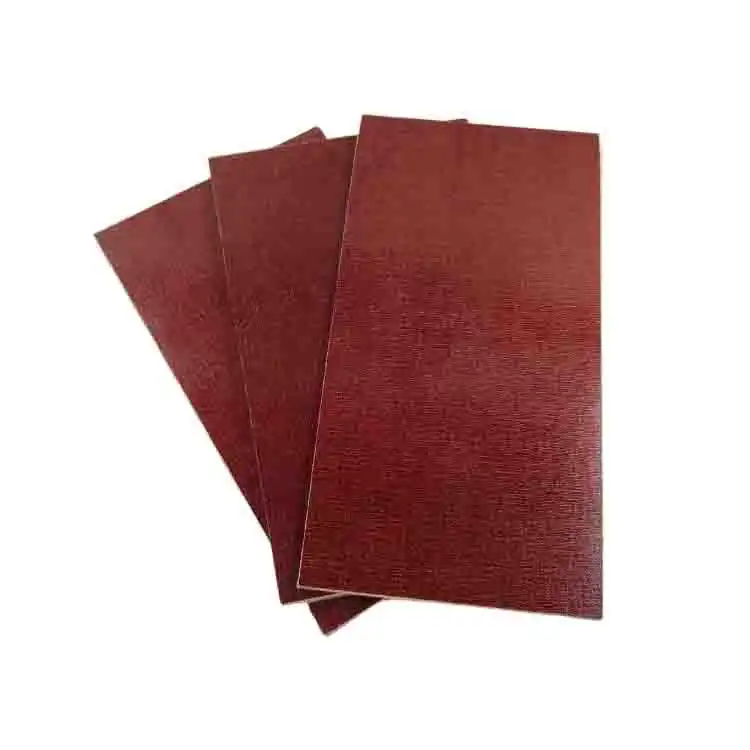How does phenolic cotton compare to other laminates?
2024-10-24 16:26:54
In the world of electrical insulation and industrial applications, phenolic cotton sheets have gained significant traction due to their unique properties and versatile performance. As manufacturers and engineers seek optimal materials for their projects, understanding how phenolic cotton compares to other laminates becomes crucial. This comprehensive guide will delve into the characteristics, advantages, and applications of phenolic cotton sheets, juxtaposing them against other popular laminate options.
What are Phenolic Cotton Sheets?
Composition and Manufacturing Process
Phenolic cotton sheets, also known as cotton phenolic laminates, are composite materials made by impregnating layers of cotton fabric with phenolic resin. The manufacturing process involves carefully layering the cotton fabric, saturating it with the resin, and then subjecting it to heat and pressure. This process results in a dense, homogeneous material with exceptional electrical and mechanical properties.
Key Properties of Phenolic Cotton
Phenolic cotton sheets boast an impressive array of properties that make them indispensable in various industries. These laminates exhibit excellent electrical insulation, high mechanical strength, and remarkable heat resistance. Moreover, they demonstrate good machinability, allowing for easy cutting, drilling, and shaping without compromising their structural integrity.
Applications in Industry
The versatility of phenolic cotton sheets has led to their widespread adoption across multiple sectors. In the electrical industry, they serve as reliable insulators in transformers, switchgear, and motor components. The aerospace sector utilizes these laminates for structural elements and interior panels due to their lightweight nature and fire-resistant properties. Additionally, phenolic cotton finds applications in automotive, construction, and general manufacturing industries.
Comparative Analysis with Other Laminates
Phenolic Cotton vs. Fiberglass Laminates
Fiberglass laminates are well-regarded for their excellent strength-to-weight ratio, making them a common choice in various applications. However, they differ significantly from phenolic cotton sheets in several aspects. Phenolic cotton sheets provide superior machinability, allowing for easier shaping and cutting without the risk of splintering during fabrication. In contrast, fiberglass laminates typically exhibit better resistance to moisture absorption and may deliver higher strength in certain demanding environments. Ultimately, the decision between these materials hinges on specific project requirements, such as mechanical properties and the environmental conditions they will face.
Phenolic Cotton vs. Epoxy Laminates
Epoxy laminates are widely recognized for their outstanding chemical resistance and dimensional stability, making them suitable for harsh environments. In contrast, phenolic cotton sheets provide superior heat resistance and are often more cost-effective. While epoxy laminates can offer enhanced electrical properties in specific applications, phenolic cotton sheets are often the preferred option when a balanced combination of electrical insulation and thermal stability is required. This makes phenolic cotton sheets ideal for various industrial applications, particularly in environments where heat exposure and electrical insulation are critical considerations.
Phenolic Cotton vs. Melamine Laminates
Melamine laminates are frequently selected for their attractive decorative finishes and impressive scratch resistance, making them popular in furniture and interior design. However, when it comes to mechanical strength and heat resistance, phenolic cotton sheets take the lead. In industrial applications where functionality and performance outweigh aesthetic considerations, phenolic cotton sheets are often the preferred choice. Their durability and ability to withstand high temperatures make them particularly well-suited for demanding environments, ensuring reliability in various operational settings.

Advantages and Limitations of Phenolic Cotton Sheets
Unparalleled Thermal Stability
A key advantage of phenolic cotton sheets is their remarkable thermal stability. These laminates are designed to retain their physical and mechanical properties even at elevated temperatures, making them well-suited for high-heat applications. This ability to withstand temperature fluctuations sets phenolic cotton apart from many other laminate materials. In industries such as electronics, aerospace, and automotive, where exposure to heat is frequent, phenolic cotton sheets ensure reliable performance and longevity, making them a trusted choice for demanding environments.
Cost-Effectiveness and Availability
In large-scale industrial applications, the cost-effectiveness of phenolic cotton sheets is a significant advantage. The raw materials used for their production are generally abundant, resulting in competitive pricing when compared to more specialized laminates. This economic benefit, combined with the exceptional durability and performance of phenolic cotton, leads to long-term cost savings for various projects. By choosing phenolic cotton, manufacturers can reduce both initial costs and maintenance expenses, making it a practical and efficient choice for a wide range of applications.
Environmental Considerations
While phenolic cotton sheets provide many advantages, it is essential to consider their environmental impact. The manufacturing process involves chemicals that necessitate careful handling and disposal to minimize potential harm. However, ongoing advancements in production techniques are enhancing the eco-friendliness of these laminates. Many companies are now prioritizing sustainable practices and exploring bio-based alternatives to traditional phenolic resins. These efforts aim to reduce the environmental footprint of phenolic cotton sheets, ensuring that they can be a responsible choice for industries committed to sustainability.
Conclusion
Phenolic cotton sheets stand out as a versatile and reliable option in the world of industrial laminates. Their unique combination of electrical insulation, mechanical strength, and thermal stability makes them indispensable in numerous applications. While other laminates may excel in specific areas, the overall performance and cost-effectiveness of phenolic cotton continue to secure its position as a preferred material in many industries.
Contact Us
For those seeking high-quality insulating sheets and expert guidance on material selection, J&Q offers a wealth of experience and knowledge. With over 20 years in production and 10 years in international trade, our team is well-equipped to provide tailored solutions for your specific needs. To learn more about our phenolic cotton sheets and other insulating materials, don't hesitate to reach out to us at info@jhd-material.com. Let us help you find the perfect laminate solution for your next project.
References
1. Johnson, R. T. (2019). "Advanced Insulation Materials in Electrical Engineering." Journal of Industrial Polymers, 42(3), 156-172.
2. Zhang, L., & Chen, X. (2020). "Comparative Analysis of Phenolic Laminates in Aerospace Applications." Aerospace Materials Review, 15(2), 89-104.
3. Patel, S. K., et al. (2018). "Thermal Stability of Industrial Laminates: A Comprehensive Study." International Journal of Thermal Sciences, 130, 294-309.
4. Yamamoto, H., & Tanaka, K. (2021). "Environmental Impact Assessment of Phenolic Resin Production." Journal of Sustainable Manufacturing, 7(4), 201-215.
5. Brown, A. D. (2017). "Cost-Benefit Analysis of Insulating Materials in Power Distribution Systems." Electric Power Systems Research, 152, 78-93.
6. Fernandez, M., & Garcia, C. (2022). "Future Trends in Bio-Based Laminates for Industrial Applications." Renewable and Sustainable Materials, 11(1), 45-62.



_1747991245292.webp)



